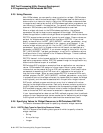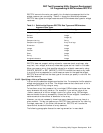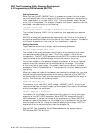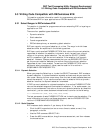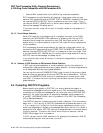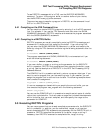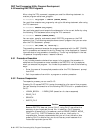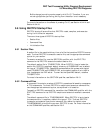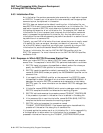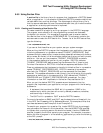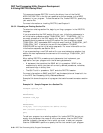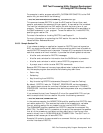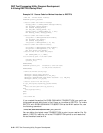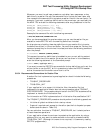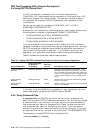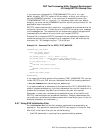DEC Text Processing Utility Program Development
5.6 Using DECTPU Startup Files
5.6.3 Initialization Files
An initialization file contains commands to be executed by an application layered
on DECTPU. To specify an initialization file to be executed, use the appropriate
command syntax, as explained in this section.
DECTPU does not determine the default handling of an initialization file; nor
does DECTPU directly load or execute the commands in an initialization file. The
application layered on DECTPU must determine the defaults and must handle
the loading and execution of an initialization file. For example, EVE reads an
initialization file (if one is present) and interprets the initialization commands
when it processes the appropriate initialization file. Any key definitions in an
initialization file override corresponding key definitions saved in a section file and
key definitions in a command file.
Typically, you use EVE initialization files to set values that are not usually saved
in a section file, such as margins, tab stops, and bound or free cursor. For a
list of the EVE default values that you might want to modify by using an EVE
initialization file, see the Extensible Versatile Editor Reference Manual.
To use an initialization file, use the /INITIALIZATION qualifier with the
EDIT/TPU command. For more information on the /INITIALIZATION qualifier,
see Section 2.6.6.
5.6.4 Sequence in Which DECTPU Processes Startup Files
When you invoke DECTPU, by default DECTPU reads, compiles, and executes
several files. The sequence in which DECTPU performs these tasks is as follows:
1. DECTPU loads into memory the specified or default section file unless you
specify the /NOSECTION qualifier on the command line.
2. DECTPU reads the specified or default command file, if found, into a buffer
named $LOCAL$INI$ unless you specify the /NOCOMMAND qualifier on the
command line.
3. If you specify the /DEBUG qualifier on the command line, DECTPU reads
the specified or default debugger file into a buffer named $DEBUG$INI$. A
debugger file contains DECTPU procedures and statements to help debug
DECTPU code. For more information on the default DECTPU debugger, see
Section 5.7.
4. If the buffer named $DEBUG$INI$ (which contains debugger code) is present,
DECTPU compiles the buffer and executes the resulting program.
5. DECTPU calls and executes the procedure named TPU$INIT_PROCEDURE
if the procedure is present in the section file or is defined in the debug file.
6. If the command file is read into the buffer named $LOCAL$INI$, DECTPU
compiles that buffer and executes the resulting program.
7. DECTPU calls and executes the procedure named
TPU$INIT_POSTPROCEDURE if the layered application has defined this
procedure in the section file, debug file, or command file.
If a layered application makes use of an initialization file, it is the responsibility
of the application to define when the initialization file is processed. EVE
processes initialization files during the TPU$INIT_POSTPROCEDURE phase.
5–18 DEC Text Processing Utility Program Development



